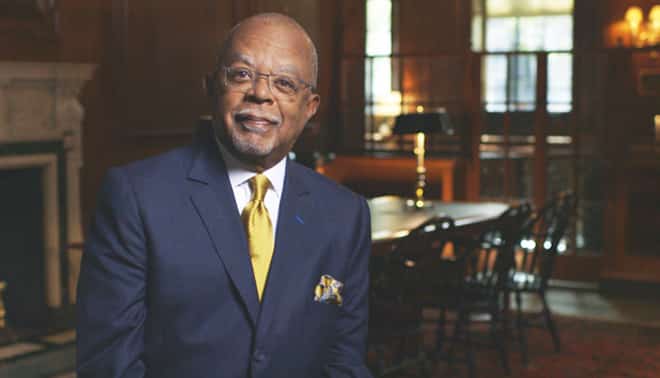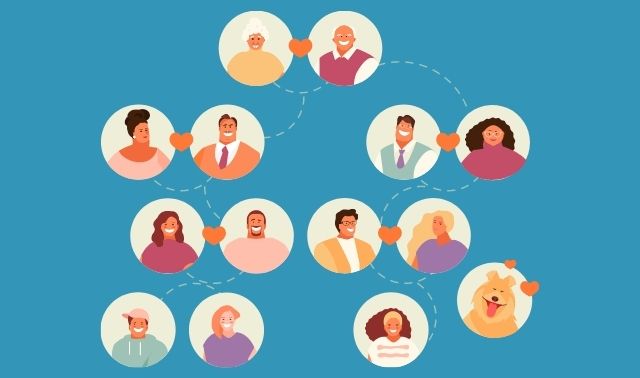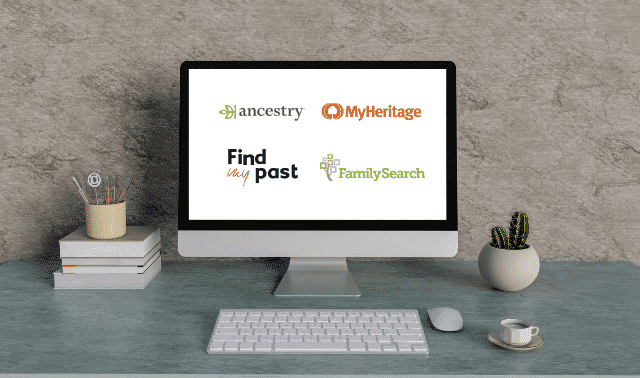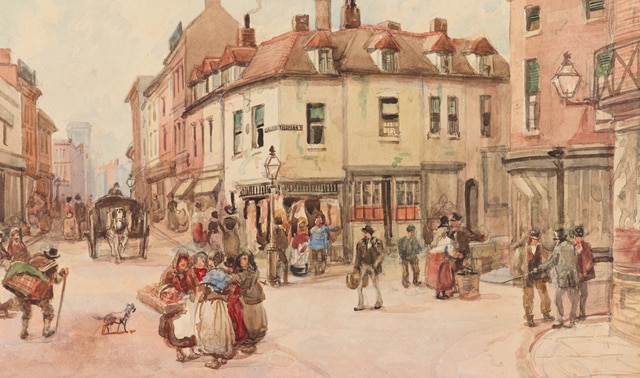Sign up for the Family Tree Newsletter Plus, you’ll receive our 10 Essential Genealogy Research Forms PDF as a special thank you!
Get Your Free Genealogy Forms
"*" indicates required fields
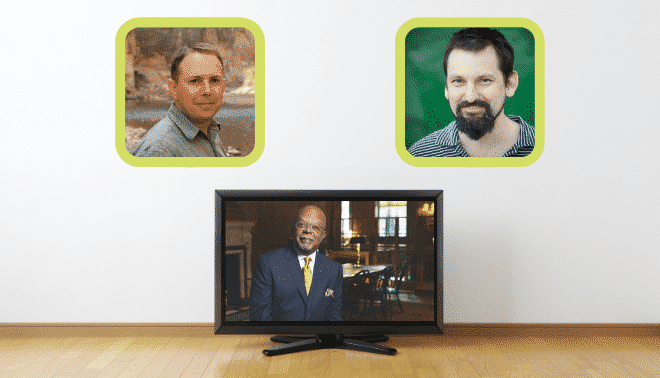
Do you ever wish you could share family history stories more powerfully? Maybe like they do with celebrities on the popular PBS television show, “Finding Your Roots with Henry Louis Gates, Jr.?” They captivate their guests with stirring stories about their ancestors. By the end of each episode, these famous visitors feel more profoundly connected to their heritage. Just the kind of experience you may want for your cousins or children!
Recently, I spoke with two powerhouse members of the FYR team. They’re busy preparing for Season 7, working from home through the coronavirus shutdown. But here they take some time to share behind-the-scenes strategies with you. You’ll see these strategies in action—and more of your favorite celebrities musing about their roots—when the second half of Season 6 airs on your local PBS station.
Meet the Team
The FYR crew has two teams: genealogy research and production. In this article, we hear from a leading member of each team.
Lead Genealogist Nick Sheedy joined FYR during Season 2 as an assistant to then-Chief Genealogist Johni Cerny. Cerny passed away 22 February 2020 and Sheedy stepped into her legendary shoes. He heads up the experts who provide foundational paper-trail research and collaborates with the show’s Genetic Genealogist, CeCe Moore.
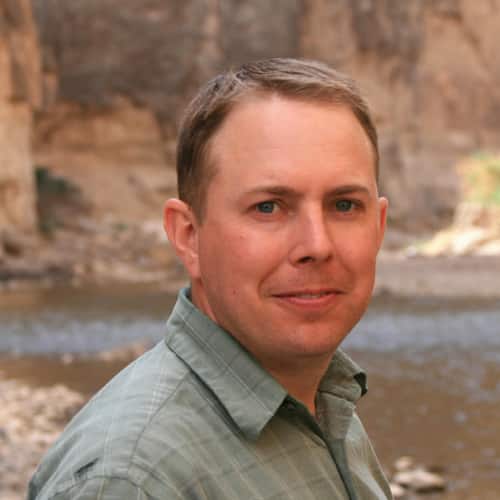
Senior Producer and show-runner Sabin Streeter works directly with Executive Producer and host Dr. Gates and oversees the entire editorial process—sometimes three to five episodes at a time. His team brings to life the guests’ ancestral stories, captures the interview process, and weaves them together into must-watch television.
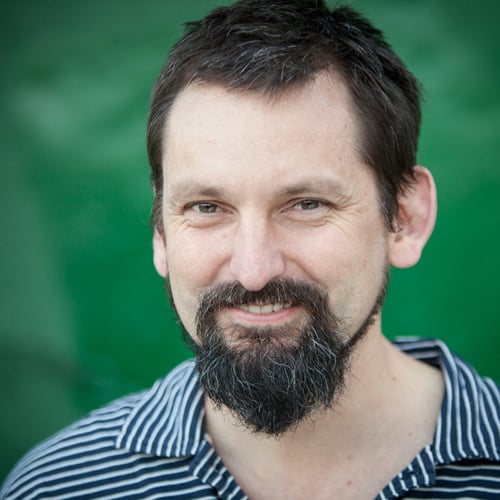
Here, we’ve distilled tips from Sheedy and Streeter into ten essential steps they follow. You’ll see pretty quickly that their success is due less to movie magic and more to methodology, determined digging and storytelling savvy—which you can do, too.
1. Begin with home sources
“We start off with a questionnaire for each guest,” Sheedy says. “A guest may be so busy we have no direct interface. So we ask for a contact relative or two on each side of the family, too.”
“We talk with whoever has the old family photos or knows the stories,” he continues. “Occasionally someone will have an original document they’ll mail it to us. For the most part, they haven’t compiled all the censuses or vital records or anything like that. They just have a few key documents and pictures.”
Family memories and mementoes are called home sources, and they’re crucial for your research, too. (Why spend hours in search of documents or stories the family already has?) Reach out to relatives on both sides of your family. Ask elderly kin about past events and long-gone loved ones. Find the keepers of family lore, photos, documents or scrapbooks. They may point you toward good stories and even unsolved mysteries.
Also at the outset, guests take DNA tests, including Y-DNA testing for the men. Other relatives from both sides of the family are also invited to test.
2. Build a solid family tree
With home sources in hand, “my team constructs basic family trees as quickly as possible,” Sheedy says. “We are usually only a few weeks ahead of the production team, and sometimes we’re working on two to four trees at a time, each at various stages.”
“We do basic research to identify as many ancestors as we can,” he explains. “We’re gathering documents and proving relationships, but not necessarily proving every birth and death date, right off the bat. At the beginning, we’re just creating as complete a pedigree as possible for the production team so they can start looking for stories in it.”
Your own research may have deadlines, such as a family reunion or a holiday gift album. Creating a basic tree can help you see its trajectory over time: where people came from and when. Search out documents that reveal relationships, such as vital records, obituaries and U.S. census data since 1880. If you don’t find records with the relationships you need, expand your tree sideways—to the brothers and sisters—to see whether their records reveal unknown parents, grandparents or other clues.
3. Search for compelling stories
Next, Sheedy and Moore share their findings with the production team, which does “the deep dives into stories,” Sheedy says. “We alert them if we have found something interesting, though. We have a nose for that kind of thing.”
For instance, a census record for Questlove’s ancestor said he was born in Africa. This was decades after importation of enslaved people was outlawed. “That gave me goosebumps!” recalls Sheedy. “It turns out that half the people on that census page were brought over illegally in 1860. There was a story to tell!”
Reviewing a bare-bones tree isn’t usually so exciting, though. “It can be pretty dry—like the ‘begats’ from the Bible,” laughs Streeter. “It’s our task to find stories about people who did good things and bad things: the criminals, the slave owners, the heroes. The stories have to be true and documentable, with records that show a beginning, middle and end.”
“Issues of class, mobility and immigration are always timely and interesting,” he continues. “We almost always try to find the immigrant ancestor. That special person changed the family’s history by moving from a place where they probably had deep roots, and the story is usually documented.” Similarly, military participation was often life-changing and well-documented, so the team also looks closely at family wartime experiences.
“Sometimes our research gets steered by the questions or goals of the guest,” says Streeter. “We don’t want to tell them stories they already know. We want to excite them or engage them intellectually. If the guest says, ‘My grandmother had such an impact on me: I want to know about her ancestors,’ we follow up.”
If you want to wow relatives with meaningful stories, look to documents for clues of a story waiting to be uncovered. Watch for anecdotes relating to war and immigration. And know your audience: consider which stories your loved ones will find most meaningful.
4. Bring in DNA results
During FYR’s lifetime, DNA testing has evolved into an essential research tool. Moore oversees all DNA research on the show, but Sheedy consults at times. “DNA sometimes informs us about a story or mystery the guest wasn’t aware of,” he says. “So many people have tested that we can often connect the dots more easily than we did even two years ago. So far we’ve already cracked three really tough cases with DNA in Season 7—and we’re only halfway through production.”
Sheedy recalls how DNA has helped several FYR guests. “Ann Curry, Téa Leoni, Joe Madison, LL Cool J and Andy Samberg all had unknown parentage in the family. Ann’s dad spent his whole life trying to find out who his dad was; Andy had hired private detectives to find his mother’s parents. Through DNA and genealogy, we found their grandparents—and their stories. Our guests were so grateful. It was so rewarding.”
Occasionally, DNA has revealed truths too personal to reveal on-camera. For example, FYR discovered that one guest’s father was not his biological dad. “We stopped production,” recalls Sheedy. “Dr. Gates called the guest directly to break the news. This was life-changing to our guest and his family. We’re looking for great stories to tell on TV, but we are sensitive to the significant impact this could have. We would not blindside a guest with a revelation like this. We’re not Jerry Springer.”
Take DNA cues from FYR by analyzing your DNA matches early in your discovery process. See what trees and total shared DNA may reveal. Be ethical and compassionate, whether asking relatives to test or considering whether to share unexpected news. Find guidance here and here, as well as in The Family Tree Guide to DNA Testing and Genetic Genealogy by Blaine Bettinger.
5. Collaborate with others
As tree data and DNA discoveries come together, so do the FYR genealogy and production teams. They may collaborate for six to eight weeks on a single storyline. Dr. Gates weighs in, too. “At every turn, we keep him informed,” says Streeter. “The show needs to reflect his vision and interests. It’s hard to have 50 people rowing in sync if you don’t have that.”
“We buckle down and get super focused during this phase,” adds Sheedy. “It’s one of the pleasures of working on “Finding Your Roots.” We all have different roles to play but we work together. When production has decided what stories to tell, we answer their questions and satisfy their needs for specific records.”
Though scattered around the country, the teams are in constant contact. “Sometimes we get 50 emails a day from the production team,” Sheedy says. “We use Google Drive so everyone has access to the records. We may write a research synopsis so the production team knows how we came to some conclusion. We’ll do virtual high-fives when a great story comes together.”
If you have a research buddy, why not collaborate virtually? Share online trees. Share research notes, documents and photos in cloud folders, such as on Google Drive. Or start a partnership: invite relatives to do specific tasks or team up with DNA matches or online trees owners with common ancestors.
6. Dig deep for details
The FYR team knows which record types are most likely to reveal compelling tales. “We get a lot of stories through newspapers,” says Sheedy. “Sometimes those are digitized online at sites like Newspapers.com. Our interns typically read through those pages for stories we don’t know about.”
“We use the ‘big boys’—websites like Ancestry, FamilySearch, Fold3 and MyHeritage,” Sheedy continues. “Having digital images of original records at our fingertips allows us to do a vast amount of work in a short time. Having all the Revolutionary War pension applications and Civil War service record index cards online makes it easy to see who may have served in these wars.”
Freedmen’s Bureau documents can help trace the formerly enslaved. “Kim Morgan, one of our genealogy team, thought there might be a story in Freedmen’s Bureau records after we found a former slave living with his nephews,” Sheedy recalls. “It took her days of browsing through online pages, but she found that the uncle was trying to get children freed from a forced indenture with former slaveholder. That’s a discovery you’ll see in Season 7.”
7. Fill gaps with historical context
Sometimes, even extensive research can’t reveal fully-formed stories. “There aren’t any records for some people,” says Streeter. “Some ancestors were completely impoverished or undocumented. African Americans had their names taken from them. Italian, Irish or Jewish immigrants may have changed their own names [so it’s hard to find them]. But even if we can’t find a name, providing context can be very moving for our guests.”
“For example, we’ve had guests whose great-grandparents came from Eastern Europe, but we can’t tell you where,” he says. “Those Jewish ancestors from the Pale of Settlement lived in poverty with few records, and many of those records were liquidated by the Nazis. But what did it mean to be a Jewish person living in Europe in the 1800s? If someone was a shoe-maker, what did it mean to be a shoe-maker in Eastern Europe or New York City? Researching a region or occupation can bring your ancestor’s story to life more than people imagine.”
That’s the approach FYR took to discover an ancestral story for actor Jane Lynch. “Her ancestor was an Irish servant,” Streeter says. “With Irish-Americans immigrants, there were more single women coming as servants or factory workers. They generally confronted strong anti-Catholic prejudices, both in Ireland and here. We showed Jane newspaper clippings with ads looking for housemaids that said, ‘No Irish need apply; No Catholic need apply.’”
Even for your well-documented ancestors, historical context can be illuminating. Look for books and documentaries about their ethnic or migrant groups, occupations or era of immigration. Brainstorm questions based on what you know: what would life have been like in a sod house, or work in a textile mill? If your questions are quite specific, turn to a university or reference librarian for help.
8. Prepare for the big reveal
Eventually, FYR staff script ancestral discoveries and historical context into a narrative to guide Gates’ conversation with celebrity guests. “The genealogy team fact-checks everything in the script,” Sheedy says. “We send the script to different experts to make sure the historical context is accurate. If we say how old someone was on a specific date, or how they’re related, I’ll double-check to make sure it’s exactly right.”
The script is much longer than you might guess: interviews average about three or four hours. That’s because a celebrity may not respond meaningfully to every ancestral story. For example, actors Sally Field and John Lithgow both descend from William Bradford, the Plymouth colony leader. “As an orphan in England, William was arrested for hanging around with the Puritans,” says Streeter. “He fled with them to the Netherlands and then joined them on the Mayflower. Bradford was only 20 years old when half his people died and he became the governor.”
“Sally had other stories that meant more to her,” Streeter continues. “But John was tearing up when we told him about William Bradford. He had a peripatetic childhood: they moved several times. It was meaningful to John that he came from this early American who was known for incredible stability and accomplishment.”
When preparing for your own big reveals, get your facts straight so you don’t stumble or say something inaccurate. Prepare a few different stories in case one doesn’t resonate with listeners. And don’t discount tales your relatives may have heard—Lithgow’s connection to Bradford was on his own Wikipedia page, which the actor had never read.
9. Stay on budget
As a public television show, FYR keeps an eye on its bottom line. “The show works more like a bigger-budget show than it actually is, though,” Streeter says. “A typical documentary is understaffed and chaotic, with everyone filling multiple roles. Because we’re in our seventh season, everyone fills a role for which they’re well-trained. Some people who started as interns are now producers.”
Most of the budget goes to research, and that is efficiently spent, too. “We pretty much do all the research ourselves,” says Sheedy. “We have someone who does microfilm lookups at the Family History Library, and occasionally we hire a third party to obtain records we don’t have access to.”
They do hire out international research, but even then, Sheedy’s team often does initial translations. “The other day, I was reading Swedish,” Sheedy reports. “I don’t actually know Swedish. But as a genealogist, you learn to pick out the essentials. When we want a guest to read a document in the interview, though, we do have it professionally translated.” Online word lists make it easier for Sheedy—and you—to translate basic information from foreign-language documents. Enter a search phrase such as Sweden word list at the FamilySearch Research Wiki. You’ll find plenty of language and handwriting aids. For additional examples, see “6 Websites for Deciphering Old German Script.”
10. Create take-home mementos
Celebrities on FYR take home more than great stories. They each receive a custom Book of Life and a gorgeous family tree chart.
The Book of Life albums are hand-stitched volumes filled with documents and images of guests’ ancestral stories. “Everyone from the producer to the interns helps assemble these,” Streeter says. “There is a heavy arts-and-crafts element that’s unusual for television. We have paper cutters and glue sticks! We treat it as lavishly as we can; we are trying to create heirloom scrapbooks.”
Enormous, custom family tree charts are no less painstakingly prepared. “It’s rare we can ever say we’ve been absolutely exhaustive, but we do our best to make the family tree as big as possible as a gift to the guest,” Sheedy explains.
You can prepare keepsake albums or charts just as beautiful for yourself and your relatives. For some great ideas, go to our Projects + Ideas category.
Discover Their Roots—and Find Yours
In October, the finished work of Streeter, Sheedy and their crews appears in the second half of Season 6 of “Finding Your Roots.” Episodes will feature new and remixed conversations with Nancy Pelosi, Diane Von Furstenberg, RuPaul, Gayle King, Lupita Nyong’o, Issa Rae, Téa Leoni, Julianne Moore, Scarlett Johannsson and others.
Now that you’ve learned some of their methods, you’ll likely find the show even more inspiring. You can do most of what they do, if on a smaller scale—and perhaps with a less famous audience.
A version of this article appeared in the September/October 2020 issue of Family Tree Magazine.
FamilyTreeMagazine.com is a participant in the Amazon Services LLC Associates Program, an affiliate advertising program designed to provide a means for sites to earn advertising fees by advertising and linking to Amazon.com and affiliated websites.
ADVERTISEMENT

